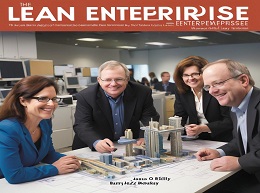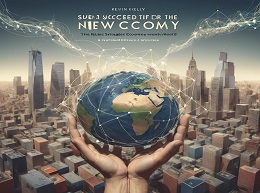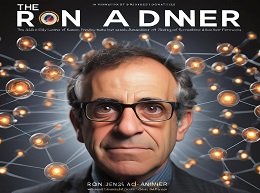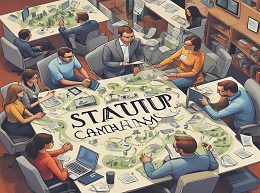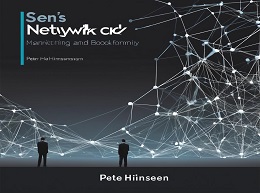Flash Foresight: How to See the Invisible and Do the Impossible

Unlocking the Future: A Comprehensive Review of "Flash Foresight"
In the fast-paced world of business and technology, the ability to anticipate future trends and make informed decisions is invaluable. Daniel Burrus, a renowned futurist and innovation expert, offers a profound exploration of this capability in his book, "Flash Foresight: How to See the Invisible and Do the Impossible." This review delves into Burrus's key concepts, practical examples, and actionable insights, providing readers with a roadmap to envisioning and shaping the future.
About the Author
Daniel Burrus is a leading futurist and strategic advisor to Fortune 500 companies. With a career spanning over three decades, he has built a reputation for accurately predicting technological trends and their implications for business and society. Burrus's expertise is the backbone of "Flash Foresight," ensuring readers receive a wealth of knowledge grounded in extensive experience and research.
The Structure of the Book
"Flash Foresight" is organized into seven principles that Burrus believes are essential for predicting future trends and achieving seemingly impossible goals. Each principle is supported by real-world examples and practical advice, making the book both informative and engaging.
Principle 1: Start with Certainty
Burrus emphasizes the importance of distinguishing between hard trends (future facts that will happen) and soft trends (assumptions that might happen). By focusing on hard trends, individuals and organizations can make more accurate predictions and strategic decisions.
Example: The Rise of Mobile Technology
In the early 2000s, the transition from desktop to mobile computing was a hard trend. Companies like Apple and Google capitalized on this certainty by developing smartphones and mobile operating systems, leading to industry dominance. Burrus uses this example to illustrate how recognizing hard trends can provide a competitive edge.
Principle 2: Anticipate
Anticipation involves looking ahead to foresee and capitalize on opportunities before they become obvious. Burrus argues that by anticipating future needs and challenges, organizations can innovate proactively rather than reactively.
Example: Netflix and Streaming
Netflix anticipated the decline of DVD rentals and the rise of digital streaming. By pivoting to a streaming model before it became mainstream, Netflix not only survived but thrived, revolutionizing the entertainment industry. This case study highlights the power of anticipation in driving strategic innovation.
Principle 3: Transform
Transformation is about leveraging technology and trends to create significant change rather than incremental improvements. Burrus encourages readers to think big and envision transformative possibilities.
Example: Amazon and E-commerce
Amazon's transformation from an online bookstore to the world's largest e-commerce platform exemplifies this principle. By continually embracing new technologies and expanding into diverse markets, Amazon has redefined retail and set new standards for customer experience.
Principle 4: Take Your Biggest Problem and Skip It
Burrus suggests that instead of solving a problem, innovators should find ways to bypass it altogether. This principle encourages creative thinking and unconventional solutions.
Example: Uber and the Transportation Industry
Uber bypassed the traditional challenges of car ownership and taxi regulations by creating a platform that connects riders with drivers. This innovative approach disrupted the transportation industry and provided a new, convenient service model.
Principle 5: Go Opposite
Sometimes, the best way to innovate is to go against conventional wisdom. Burrus advocates for exploring contrarian strategies that others might overlook.
Example: Cirque du Soleil and the Circus Industry
Cirque du Soleil revolutionized the circus by eliminating animal acts and focusing on theatrical storytelling and acrobatics. By going opposite to traditional circus norms, they created a unique entertainment experience and a highly successful brand.
Principle 6: Redefine and Reinvent
Redefinition and reinvention involve taking existing concepts and reshaping them to meet new demands or create new markets. Burrus encourages continuous innovation and adaptability.
Example: Apple and the iPhone
Apple redefined the smartphone by integrating a user-friendly interface, an app ecosystem, and a sleek design. This reinvention not only captured the market but also set new standards for mobile technology, demonstrating the impact of redefining existing products.
Principle 7: Direct Your Future
Burrus concludes with the importance of actively shaping your future rather than passively accepting it. By setting clear goals and leveraging foresight, individuals and organizations can create their desired outcomes.
Example: SpaceX and Space Exploration
Elon Musk’s SpaceX directs its future with a clear vision: making space travel more accessible and ultimately enabling human life on Mars. This ambitious goal drives their innovations and achievements, exemplifying the principle of directing the future.
Practical Insights and Takeaways
Throughout "Flash Foresight," Burrus offers numerous practical insights and actionable advice. Some key takeaways include:
- Identify Hard Trends : Focus on future certainties to make informed strategic decisions.
- Be Proactive : Anticipate changes and opportunities before they become obvious.
- Embrace Transformation : Look for ways to create significant, rather than incremental, change.
- Think Creatively : Bypass problems and explore unconventional solutions.
- Challenge Norms : Consider contrarian strategies to uncover new opportunities.
- Continuously Innovate : Redefine and reinvent existing concepts to stay relevant.
- Shape Your Future : Set clear goals and actively work towards achieving them.
"Flash Foresight: How to See the Invisible and Do the Impossible" is an essential read for anyone looking to enhance their ability to predict and shape the future. Daniel Burrus provides a comprehensive guide that combines theoretical insights with practical applications, making it relevant for business leaders, entrepreneurs, and innovators alike.
The book’s structured approach, supported by compelling examples, ensures that readers can easily grasp and apply the principles of foresight. By following Burrus's guidance, individuals and organizations can develop the skills needed to navigate uncertainty, capitalize on emerging trends, and achieve extraordinary results.
Whether you’re looking to innovate within your organization or simply understand how to better anticipate future trends, "Flash Foresight" offers the tools and knowledge necessary to succeed in an ever-changing world.


